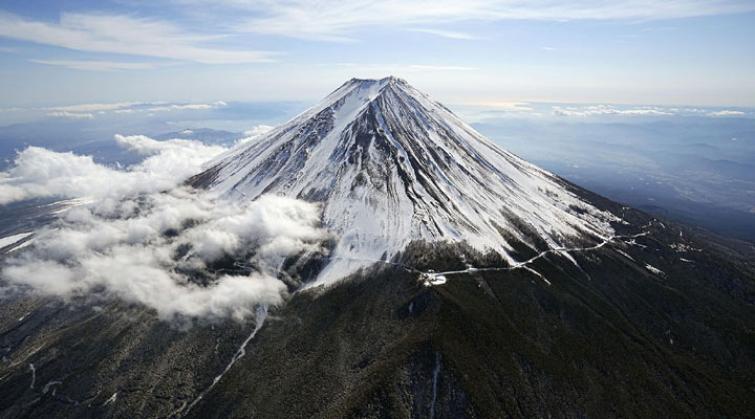By FnF Correspondent | PUBLISHED: 28, Aug 2025, 11:32 am IST | UPDATED: 28, Aug 2025, 11:32 am IST

The Japanese government recently released an AI-generated video of Mount Fuji to illustrate what would happen if Mount Fuji were to erupt. "The moment may arrive without any warning," says the narration, before the video cuts to dramatic visuals of large clouds of smoke emitting from Fuji.
The AI-video, released on Sunday by the Tokyo Metropolitan Government's Disaster Prevention Division, is to raise awareness and highlight the need for preventive measures. Notably, Mount Fuji is not going to erupt any time soon. It last erupted 318 years ago, in what is known as the Hoei eruption.
According to CNN, the video warns that volcanic ash could reach Tokyo within two hours after an eruption, with 2-10 cm of ash expected to accumulate, and the western part of the capital city could see up to 30 cm of ash.
The video explains that volcanic ash could severely disrupt daily life. Ash settling on train tracks and airport runways would halt transport, while driving would become hazardous due to poor visibility and slippery roads. Powerlines could fail under the weight of wet ash, leading to large-scale blackouts, while phone and internet services would likely be knocked out.
Health risks would also rise, with ash particles causing irritation and breathing difficulties, particularly for people with asthma or other respiratory issues. With supply chains cut off, stores would quickly run out of food and essentials, prompting officials to advise residents to stock up for at least three days.
A large-scale eruption would produce an estimated 1.7 billion cubic meters (60 billion cubic feet) of volcanic ash, the government said, of which around 490 million cubic meters is expected to accumulate on roads, buildings, and other land areas, requiring disposal. Piled-up ash could cause wooden houses with low loadbearing capacity to collapse, one expert previously warned.
The sky would be covered in black volcanic ash, and urban areas would be plunged into darkness, even during the day, the government added. The economic loss from a Mount Fuji eruption is estimated to be up to 2.5 trillion yen ($16.6 billion).
Some residents expressed worries following the Fuji video.
"The thought of volcanic ash causing transportation chaos in the Tokyo metropolitan area is terrifying,” said an internet user identified as Mayotan on X.
Another X user identifying himself as Suu noted both the importance and challenges in getting prepared. "Cassette stove, flashlight, water, food." But, they noted it "would be hard" to have the power go out in the summer, when temperatures in Japan soar to sweltering levels.
Some viewed the Japanese authorities' approach as alarmist, with well-intended warnings turning into deterrents for some tourists in the past few months. "It tends to be used to stir up a sense of crisis and fear," wrote user with the X handle shomin_consul.
This is not the first time authorities have reminded residents in cities around Fuji to be prepared. In March, the government issued guidelines recommending residents maintain a two-week supply of essentials in the event of a full-blow spill.

by : Priti Prakash
This week has thrown up a firestorm of global developments. Let's dive into the top 5 internati...